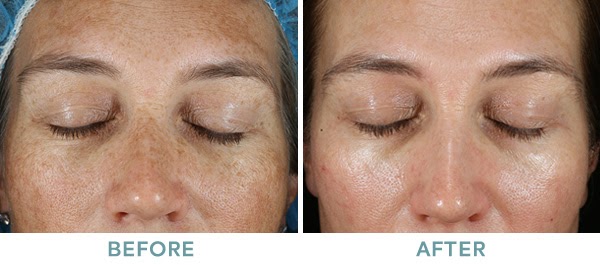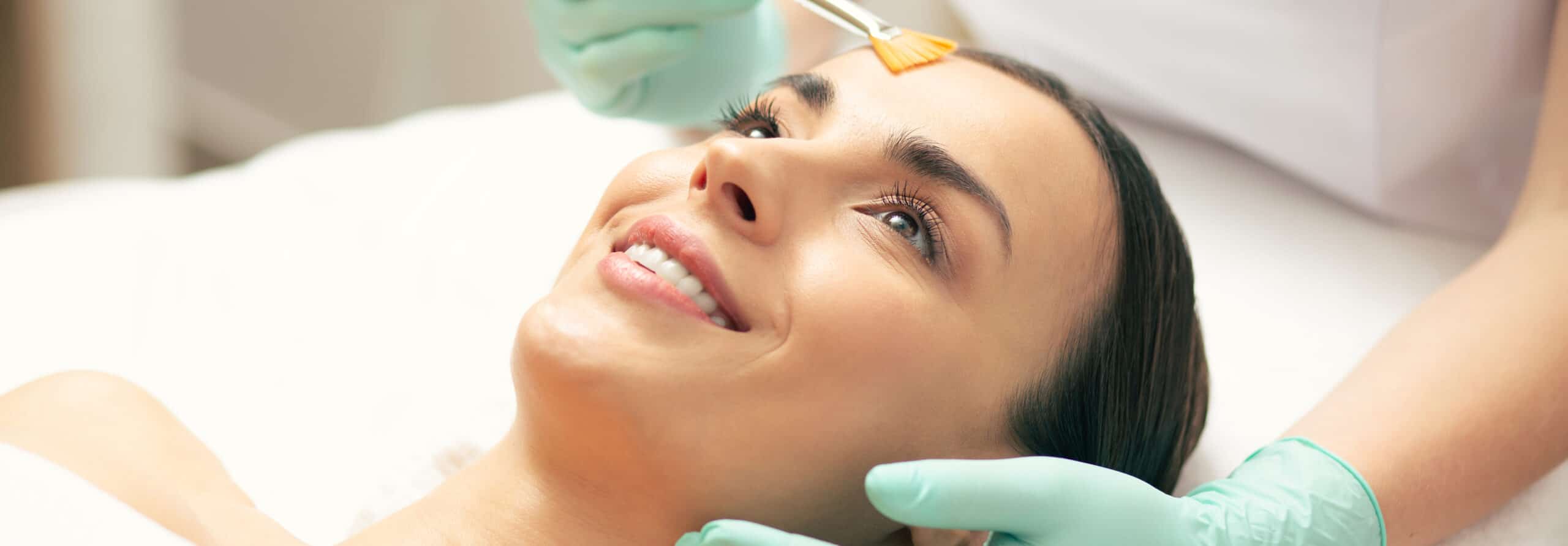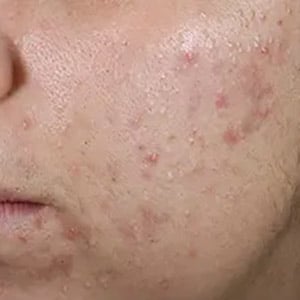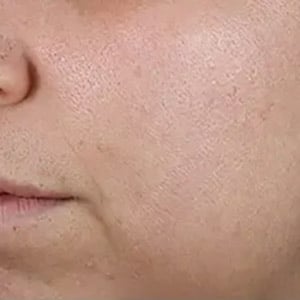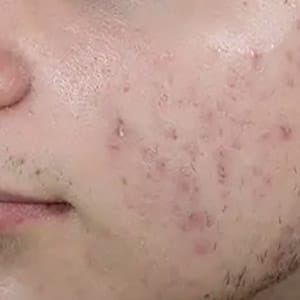How Do Chemical Peels Work?
Our skin is comprised of several layers. As new cells grow below, older cells shed off the top layer of the skin. A chemical peel works to hasten this process, revealing newer and healthier cells below the skin’s surface. To do this, a chemical peel uses acids that raise the acidity of the skin to about 3.8 pH. This shift in acidity loosens the substance that adheres dead cells to healthier skin below. A chemical peel can cause redness and irritation but this tends to heal quickly, leaving the skin refreshed and healthy.
What Will The Procedure Feel Like?
The treatment area will be wiped with pre-peel solution and then the chemical peel solution will be applied. Mild to moderate stinging at the treated site may be experienced which will diminish when the peeling agent is neutralized and resolves in several minutes. A fan may be used during the procedure to cool the skin and relieve some of the discomfort.
Types of Chemical Peels
There are three main types of chemical peels that dermatologists and providers offer. These include:
- Superficial peels utilize mild acids like alpha-hydroxy acid to gently exfoliate. These peels only help the outermost layer of skin.
- Medium peels employ trichloroacetic (TCA) or glycolic acid to reach the middle and outer layer of skills. This makes it more effective for removing damaged skin cells.
- Deep peels fully breach the middle layer of the skin to remove damaged skin cells. Deep peels often use phenol or trichloroacetic acid.
Do I Have To Do Anything To Prepare In Advance?
Discontinue use of any topical retinoids (Retin-A, Tazorac, Differin, Ziana, Epiduo, Tretinoin, Clear Plus, Avene Retrinal or Triacneal, Triluma, etc.) and mechanical or granular exfoliation for five days prior to treatment. Avoid facial waxing for seven days prior to treatment.
Follow the recommended skin care regimen as directed by your service provider for treatment. Make sure your skin is not irritated or inflamed before a peel.
Please tell your provider if you have a history of cold sores as we recommend pretreatment to prevent a flare. Treatment may not be performed if there is an active cold sore.
How Many Treatments are Necessary?
Depending on your goals, your aesthetician will work with you to customize a treatment plan. Chemical peels are rarely recommended as a single treatment service. They are most effective when received in a series of treatments spaced 2-4 weeks apart.
When Will I See Results?
Results will vary per patient and realistic expectations will be discussed during your first treatment. Having a good at home regimen will help attain optimum results. In addition, smoking, excessive alcohol and excessive sun exposure will limit results. Results are less dramatic when chemical peels are utilized for prevention and maintenance (treatments spaced greater than one month apart) than when utilized in a more frequent, treatment-oriented protocol.
Who Cannot Have the Treatment?
A chemical peel is safe for all skin types and colors. Patients who have taken isotretinoin (Accutane) within the previous six months cannot have the treatment. Communication with your provider is key in determining which peel will best suit you based on your skin type and concerns.
What Will I Look Like Afterwards?
Downtime is dependent on the type of chemical peel performed. Skin may appear flushed followed by possible peeling one to five days post treatment or dark brown followed by 7-10 days of peeling. The amount of peeling can vary from invisible microscopic peeling to more noticeable dry skin flaking. Care should be taken to prevent trauma to the treated area, especially during the first three days following treatment. Cleanse with a gentle cleanser (Cetaphil or CeraVe) and apply a bland moisturizer as needed. Do not apply any lotions with retinoids, acids, enzymes or tea tree oil for three days post treatment.
Avoid direct sun exposure. Daily application of a minimum SPF 30 sunblock with zinc oxide should be used after a chemical peel. Reapply when out in the sun every one hour or more frequently if swimming or sweating. Sun exposure may compromise results or result in additional pigmentation.
Before and After Photos
ACNE TREATMENT – TAKEN AFTER 1 MONTH, POST 9 MONTHLY TREATMENTS
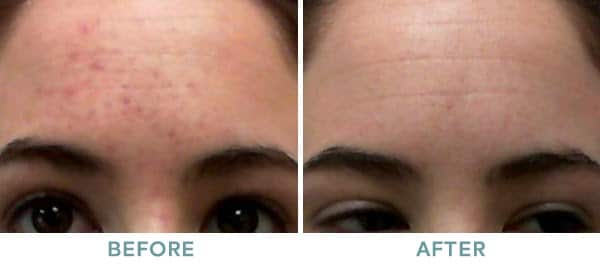
ACNE TREATMENT WITH VIPEEL
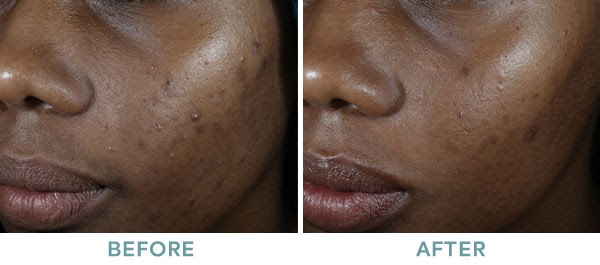
MELASMA TREATMENT WITH OBAGI
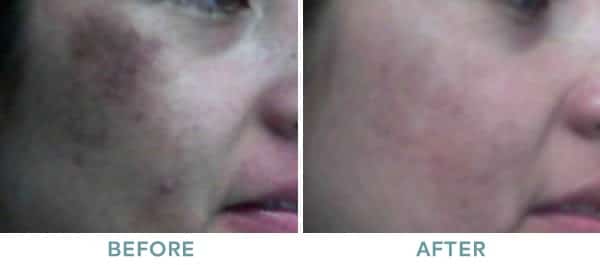
TCA TREATMENT
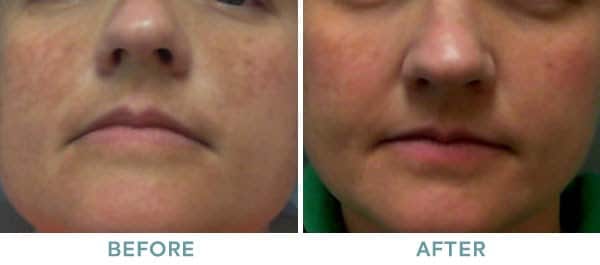
AFTER 7 MONTHLY CHEMICAL PEEL TREATMENTS AND THEN 8 MORE TREATMENTS EVERY OTHER MONTH

AFTER 4 MONTHLY CHEMICAL PEEL TREATMENTS AND THEN 4 MORE MONTHLY TREATMENTS

BEFORE BRIGHTENING PEEL LEVEL 2 AND 6 WEEKS POST BRIGHTENING PEEL LEVEL 2

BEFORE BRIGHTENING PEEL LEVEL 2 AND 6 WEEKS POST BRIGHTENING PEEL LEVEL 2
